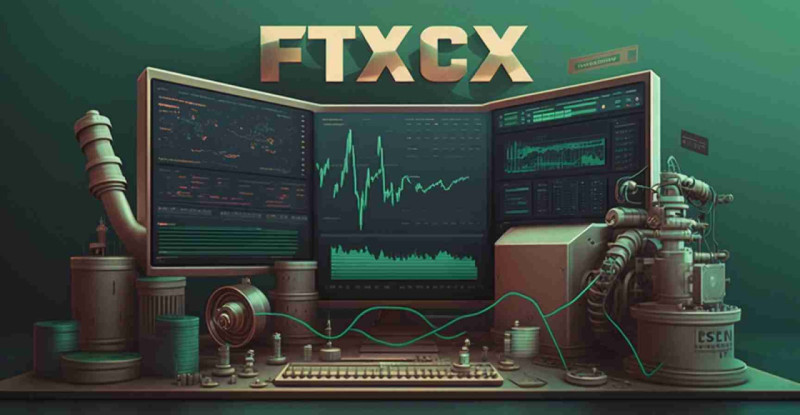
What Is Margin Level In Trading And Why Is It Important?
Margin level is a key concept in trading, and it is essential for traders to understand its meaning and significance. In trading, margin refers to the amount of money that a trader needs to deposit with their broker to open a position. Margin level, on the other hand, refers to the ratio of the trader's equity to their used margin.
Equity, in trading, is the amount of money that a trader has in their account after accounting for their open positions' profit or loss. Used margin is the amount of money that the trader has deposited with their broker to open their positions. The margin level is calculated by dividing the equity by the used margin and expressing the result as a percentage.
For example, suppose a trader has $10,000 in their trading account and has opened a position that requires $1,000 in margin. In that case, their used margin is $1,000, and their equity is $9,000. The margin level is then calculated by dividing $9,000 by $1,000, which results in a margin level of 900%.
Margin level is essential because it reflects the trader's account's health and stability. If a trader's margin level falls below a certain level, it can lead to a margin call from the broker. A margin call is a situation in which the broker asks the trader to deposit additional funds into their account to maintain the minimum required margin level.
When the margin level falls below a certain level, it means that the trader's account is highly leveraged, and a small change in the market can lead to significant losses. As a result, margin level is an important risk management tool for traders. By monitoring their margin level and ensuring that it remains above the minimum required level, traders can reduce their risk of margin calls and potential losses.
In conclusion, margin level is a critical concept in trading. It reflects the trader's account's health and stability and serves as an important risk management tool. Traders should always monitor their margin level and ensure that it remains above the minimum required level to reduce their risk of margin calls and potential losses.
How Is Margin Level Calculated And What Factors Influence It?
Margin level is a crucial concept in trading, as it reflects the trader's account's health and stability. Understanding how margin level is calculated and what factors influence it is essential for traders to manage their risk effectively.
Margin level is calculated by dividing the trader's equity by their used margin and expressing the result as a percentage. Equity is the amount of money in the trader's account after accounting for the profit or loss of their open positions. Used margin is the amount of money that the trader has deposited with their broker to open their positions.
For example, suppose a trader has $10,000 in their account and has opened a position that requires $1,000 in margin. In that case, their used margin is $1,000, and their equity is $9,000. The margin level is then calculated by dividing $9,000 by $1,000, which results in a margin level of 900%.
Several factors influence the margin level, including the size of the position, the leverage used, and the market's volatility. The larger the position size, the more margin the trader will need, which can reduce their margin level. Similarly, higher leverage increases the potential gains and losses but also increases the risk of margin calls and reduced margin levels.
Market volatility can also affect margin levels. If the market moves against the trader's position, their equity can decrease, which can result in a lower margin level. This can increase the risk of margin calls and potentially lead to significant losses.
Another factor that can influence margin levels is the broker's margin requirements. Different brokers have different margin requirements, which can affect the amount of margin needed to open a position and the minimum required margin level.
In conclusion, margin level is an important concept in trading, as it reflects the trader's account's health and stability. It is calculated by dividing the trader's equity by their used margin and expressed as a percentage. Several factors influence margin levels, including position size, leverage used, market volatility, and broker margin requirements. Understanding these factors is crucial for traders to manage their risk effectively and avoid margin calls and potential losses.

How Does Margin Level Impact Your Ability To Open And Maintain Positions In The Market?
Margin level is a critical factor that impacts a trader's ability to open and maintain positions in the market. Margin level reflects the trader's account's health and stability and serves as a risk management tool for traders. It is important for traders to understand how margin level impacts their ability to trade effectively.
Margin level is calculated by dividing the trader's equity by their used margin and expressing the result as a percentage. If the margin level falls below the minimum required level, the broker may issue a margin call, requiring the trader to deposit additional funds into their account to maintain the required margin level.
When the margin level is high, it means that the trader has sufficient margin to cover their positions and absorb any potential losses. This provides the trader with more flexibility to open and maintain positions in the market. Traders with high margin levels can take advantage of more significant position sizes and higher leverage, which can potentially increase their profits.
However, if the margin level is low, it indicates that the trader has less margin to cover their positions, and even small market movements can lead to significant losses. This reduces the trader's flexibility to open and maintain positions in the market, as they may be forced to close some of their positions to maintain the required margin level.
If the margin level falls below the broker's minimum requirement, the trader may receive a margin call. A margin call can have significant consequences, as the trader may be forced to deposit additional funds into their account or risk having their positions closed by the broker. This can result in substantial losses and damage the trader's account's health and stability.
In conclusion, margin level is a critical factor that impacts a trader's ability to open and maintain positions in the market. A high margin level provides the trader with more flexibility to trade effectively, while a low margin level reduces their flexibility and increases their risk of significant losses. Traders should monitor their margin level carefully and ensure that it remains above the minimum required level to avoid margin calls and maintain their account's health and stability.
What Happens When Your Margin Level Falls Below A Certain Threshold?
Margin level is a crucial concept in trading, and falling below a certain threshold can have significant consequences for traders. Margin level reflects the trader's account's health and stability and serves as a risk management tool for traders. When the margin level falls below a certain threshold, the broker may issue a margin call, requiring the trader to deposit additional funds into their account or risk having their positions closed.
A margin call is a notification from the broker that the trader's margin level has fallen below the minimum required level. The minimum required level varies between brokers, but it is typically between 100% and 50% of the trader's equity. When the margin level falls below this level, the broker may issue a margin call, requiring the trader to deposit additional funds into their account to maintain the required margin level.
If the trader fails to deposit additional funds, the broker may close some or all of the trader's positions to increase the margin level. This can result in significant losses for the trader and damage the account's health and stability. In extreme cases, the broker may even liquidate the entire account to cover the losses, leaving the trader with nothing.
Traders should monitor their margin level closely and ensure that it remains above the minimum required level to avoid margin calls. This requires careful risk management and position sizing to ensure that the trader has sufficient margin to cover their positions and absorb any potential losses.
In conclusion, falling below the minimum required margin level can have significant consequences for traders. A margin call can require the trader to deposit additional funds or risk having their positions closed, potentially resulting in significant losses. Traders should monitor their margin level closely and ensure that it remains above the minimum required level to avoid margin calls and maintain their account's health and stability.

How Can You Manage Your Margin Level To Minimize Risk While Trading?
Managing your margin level is critical to minimizing risk while trading. Margin level reflects the trader's account's health and stability and serves as a risk management tool for traders. Here are some ways to manage your margin level and minimize risk while trading:
- Use proper risk management: Proper risk management is crucial to managing your margin level effectively. Traders should determine their risk tolerance and set stop-loss orders to limit potential losses. Position sizing should also be carefully considered to ensure that the trader has sufficient margin to cover their positions and absorb any potential losses.
- Use appropriate leverage: Leverage can magnify profits, but it can also magnify losses. Traders should use appropriate leverage based on their risk tolerance and account size. Higher leverage can increase the potential for profits but also increases the risk of significant losses.
- Monitor your margin level: Traders should monitor their margin level regularly and ensure that it remains above the minimum required level. This requires careful attention to position sizing and risk management to ensure that the trader has sufficient margin to cover their positions and absorb any potential losses.
- Deposit additional funds: If the trader's margin level falls below the minimum required level, they may need to deposit additional funds to maintain the required margin level. Traders should always have extra funds available to cover unexpected losses or margin calls.
- Close unprofitable positions: If a position is consistently unprofitable and contributing to a low margin level, it may be necessary to close the position to increase the margin level. This can be a difficult decision, but it is essential to manage risk effectively and maintain the account's health and stability.
In conclusion, managing your margin level is critical to minimizing risk while trading. Proper risk management, appropriate leverage, monitoring the margin level, depositing additional funds, and closing unprofitable positions are all important steps to managing margin level and minimizing risk effectively. Traders should always prioritize risk management and maintain a healthy margin level to ensure long-term success in trading.
What Are Some Common Mistakes That Traders Make When It Comes To Margin Level?
Margin level is a critical concept in trading, and making mistakes when managing it can result in significant losses for traders. Here are some common mistakes that traders make when it comes to margin level:
- Overleveraging: One of the most common mistakes traders make is using too much leverage. Higher leverage increases the potential for profits, but it also magnifies losses, making it essential to use appropriate leverage based on your risk tolerance and account size.
- Ignoring risk management: Proper risk management is crucial to managing your margin level effectively. Traders who ignore risk management are at higher risk of significant losses, as they are not adequately managing the risks associated with their trades.
- Failing to monitor the margin level: Traders should regularly monitor their margin level and ensure that it remains above the minimum required level. Failing to do so can result in margin calls and potentially significant losses.
- Not depositing additional funds when necessary: When the margin level falls below the minimum required level, traders may need to deposit additional funds to maintain the required margin level. Failing to do so can result in margin calls and potentially significant losses.
- Holding onto unprofitable positions: Holding onto unprofitable positions can contribute to a low margin level, increasing the risk of margin calls and significant losses. Traders should consider closing unprofitable positions to increase their margin level and manage risk effectively.
- Lack of understanding: Finally, lack of understanding is a common mistake traders make when it comes to margin level. It is essential to understand the concept of margin level and how it impacts trading to manage it effectively.
In conclusion, managing margin level is critical to trading success, and avoiding common mistakes is essential to minimize risk and maximize profits. Proper risk management, appropriate leverage, monitoring the margin level, depositing additional funds when necessary, closing unprofitable positions, and understanding the concept of margin level are all crucial to managing margin level effectively.

How Do Different Trading Platforms And Brokers Handle Margin Level Requirements?
Different trading platforms and brokers have varying margin level requirements, which can impact traders' ability to open and maintain positions in the market. Here are some ways different trading platforms and brokers handle margin level requirements:
- Margin Call Policy: Most brokers have a margin call policy that requires traders to maintain a minimum margin level to avoid a margin call. The margin call policy typically notifies traders when their margin level falls below a certain threshold and provides instructions on how to restore the margin level.
- Margin Requirements: Different trading platforms and brokers have varying margin requirements, which dictate the minimum amount of funds required to open a trade. Margin requirements can vary depending on the financial instrument being traded, the trading platform, and the broker.
- Margin Limits: Some brokers may set margin limits, which limit the amount of leverage that traders can use. Margin limits are designed to protect traders from overleveraging and potential significant losses.
- Margin-Based Trading: Some trading platforms and brokers offer margin-based trading, which allows traders to leverage their trades with borrowed funds. Margin-based trading can magnify profits, but it can also magnify losses, making it essential to use appropriate leverage based on your risk tolerance and account size.
- Margin Interest Rates: Some brokers may charge margin interest rates on borrowed funds used for margin-based trading. Margin interest rates can impact traders' profits and should be considered when choosing a broker or trading platform.
In conclusion, different trading platforms and brokers handle margin level requirements differently, which can impact traders' ability to open and maintain positions in the market. Traders should carefully consider margin call policies, margin requirements, margin limits, margin-based trading, and margin interest rates when choosing a broker or trading platform and managing their margin level effectively.
How Can You Use Margin Level To Evaluate The Risk Of A Potential Trade?
Margin level is an essential metric that traders can use to evaluate the risk of a potential trade. By analyzing the margin level, traders can determine whether the potential trade is worth the risk or not. Here are some ways you can use margin level to evaluate the risk of a potential trade:
- Calculate the required margin: The required margin is the minimum amount of funds required to open a trade. By calculating the required margin, you can determine the potential risk associated with the trade.
- Calculate the available margin: The available margin is the amount of funds available to open a trade. By comparing the available margin with the required margin, you can determine the level of leverage required to open the trade.
- Determine the margin level: Margin level is calculated by dividing the equity by the used margin and multiplying the result by 100. A margin level of 100% or higher indicates that the available margin is sufficient to open the trade, while a margin level below 100% indicates that the available margin is insufficient, and the trade may result in a margin call.
- Consider the financial instrument: Different financial instruments have varying margin requirements, which can impact the margin level and the potential risk associated with the trade. It's essential to consider the margin requirements of the financial instrument when evaluating the potential risk of a trade.
- Consider risk management: Proper risk management is crucial when evaluating the potential risk of a trade. Traders should consider factors such as stop-loss orders, take-profit orders, and risk-reward ratios when evaluating the potential risk of a trade.
In conclusion, margin level is an essential metric that traders can use to evaluate the risk of a potential trade. By calculating the required margin, available margin, and margin level, considering the financial instrument and risk management, traders can determine whether a potential trade is worth the risk or not. Proper evaluation of the margin level can help traders manage their risk effectively and maximize profits.





